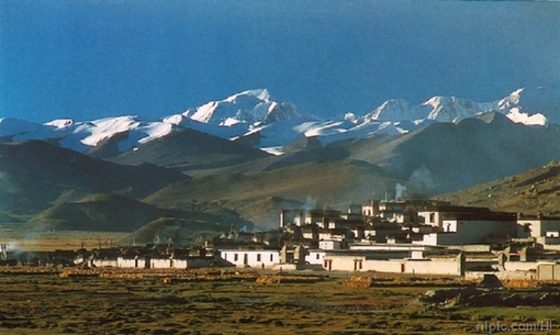This winter, Yuzhen, a sixty something villager from Tingri County in Tibet, will move into a new house, leaving behind the freezing cold home she used to shiver in each winter.
|

|
|
The poor insulation and rudimentary structure of traditional houses mean winter is torture for many villagers. [nipic.com/HI]
|
The poor insulation and rudimentary structure of traditional houses mean winter is torture for many villagers.
Yuzhen's new house, part of a pilot project financed by global chemicals giant Dupont, was built to a "green" design which meets energy efficiency standards while retaining local traditional features.
In Yuzhen's old house she relies on dried cattle dung to fuel her stove. Gathering the dung was a daily chore, and occasionally she used to climb the mountain for firewood. But in recent years the area has suffered dramatic ecologic deterioration and there is little wood left.
"At night, the indoor temperature is virtually as cold as outdoors," said the old lady, as she added cattle dung to a leaky furnace that fills the house with smoke.
In her village, just 40 km from Mount Everest, people begin heating their houses in mid-July. "Since the winter set in, our family has burned almost 1,000 kilos of cattle dung," she said.
Phubu Tsering, who lives in a nearby village, said his family depends heavily on cattle dung for heat to get through the winter.
"At night, the indoor temperature is usually below zero," said Zeng Yan, a senior architect from the China National Engineering Research Center for Human Settlements, which helped design the new houses.
Energy expert Tsering Norbu said Tibet is extremely cold, with many areas having an annual temperature averaging at 6 degrees below zero and lows of around 40 degrees below.
"Tibet has no coal and little oil or natural gas. Fuel has to be transported here through long-haul pipes and that means prices are high," he said.